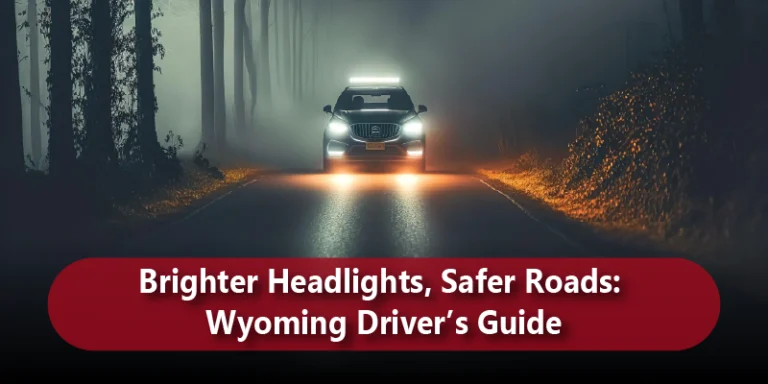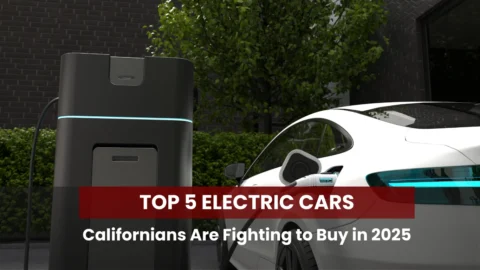The vast, beautiful landscapes of Wyoming are breathtaking, but they also present unique challenges for drivers, particularly after the sun sets. When daylight fades, the difference between a safe journey and a risky one often comes down to one critical component: your vehicle’s lighting system.
For drivers traversing the state’s long stretches of rural highway, grappling with unpredictable wildlife, and facing severe weather, optimizing visibility is not just a preference; it’s a fundamental component of Wyoming driving safety. This guide is designed to empower you with the knowledge and tips you need to ensure brighter headlights lead to safer roads across the Cowboy State.
The Wyoming Nighttime Challenge: Why Visibility is Paramount
Driving in Wyoming after dark is dramatically different from city driving. The state boasts a low population density, resulting in many highways with little to no ambient light. The challenge is compounded by three major factors:
- Sheer Darkness and Fatigue: On open, unlit roads, the darkness can be absolute. This intensifies the need for effective lighting and contributes to driver fatigue, a known factor in many critical crashes, particularly on rural roads.
- Wildlife Hazards: Wyoming’s stunning wildlife often poses the most immediate night driving threat. Deer, elk, and moose frequently cross highways, and in the dark, the time you have to spot and react to them is minimal. How to improve visibility while driving is essentially a question of how to increase your reaction time.
- Harsh Winter Conditions: Winter driving safety in Wyoming is an annual concern. Snow, fog, and ice reflect light, creating blinding glare, while road markings can disappear entirely. Headlights must perform in these high-contrast, low-visibility conditions.
Wyoming’s fatal crash rate per 100,000 population is significantly higher than the national average, underscoring the vital need for every driver to implement rigorous safe driving tips USA, especially at night.
Brighter Headlights: Understanding the Technology and the Law
The quickest and most effective way to enhance your night driving experience is to ensure your headlights are operating at peak efficiency—or to upgrade them entirely.
Wyoming Headlight Laws: What You Need to Know
Before considering an upgrade, it is crucial to understand state regulations. Wyoming law mandates that headlights must be used from one-half hour after sunset to one-half hour before sunrise, and anytime visibility is insufficient, and places a limit on brightness.
- Brightness Limit: In Wyoming, the maximum legal brightness for most passenger vehicle lighting is 3,000 candlepower.
- Color Restriction: Headlights must emit white light. Green and blue lights are restricted.
- High Beam Use: On unlit rural highways, you should use your high beams, but you must dim them within 500 feet of an oncoming vehicle and within 300 feet when following another vehicle.
Staying within these legal parameters is essential. Installing aftermarket lights that exceed the brightness limit is illegal and contributes to a dangerous glare that blinds oncoming drivers, reducing overall road safety.
The Showdown: LED Headlights vs Halogen
For drivers seeking brighter headlights, the choice often boils down to the two most common bulb types:
| Feature | Halogen Headlights | LED Headlights |
| Brightness | Moderate (Typically 800-1,200 lm) | High Typically 1,600+ lm |
| Color | Warm/Yellowish | Cool/White (4,000K to 6,500K) |
| Lifespan | Short (500–1,000 hours) | Very Long (30,000+ hours) |
| Energy Efficiency | Low (Most energy wasted as heat) | High (More energy converted to light) |
| Cost | Low (Inexpensive replacement) | Higher (Initial cost, but long-term savings) |
Why LED is often preferred for Wyoming: LED lights offer significantly brighter, whiter light with a longer reach, making it easier to spot hazards like wildlife at a greater distance. Their whiter light also enhances contrast, which can be invaluable when trying to discern road markings or dark-colored animals.
A Note on Winter Driving: One minor drawback of LED headlights vs halogen is that LEDs generate less heat. In extreme winter driving safety conditions, the lack of heat can mean snow and ice accumulate faster on the lens, which is why proper headlight maintenance tips become even more crucial.
Beyond the Road: Essential Headlight Maintenance Tips
Having the best bulbs is useless if your housing and aim are poor. These routine steps are vital to maximize the effectiveness of your car lighting guide:
- Restore Cloudy Lenses: Over time, headlight lenses yellow and become cloudy from UV exposure. This oxidized layer acts like a shade, reducing light output by up to 50%. Regular cleaning and using a specialized headlight restoration kit is one of the most effective headlight maintenance tips you can implement. Clear lenses are essential for achieving the full benefit of brighter headlights.
- Proper Aiming: Headlights must be aimed correctly. A misaligned beam can illuminate the sky instead of the road or, worse, blind oncoming drivers. If you have recently replaced a bulb or hit a pothole, have a mechanic check the alignment. Incorrectly aimed aftermarket LED bulbs are a major cause of glare complaints.
- Keep Them Clean: During the winter, road grime, salt, and snow spray quickly coat your headlights. Pull over regularly and wipe them down with a soft cloth and non-abrasive cleaner. This is a simple, yet highly effective, night driving tip.
Comprehensive Wyoming Road Safety and Night Driving Strategies
While optimal lighting is key, the best light source is ineffective without proper driver habits. Incorporate these core strategies into your nightly routine:
1. Master Your High Beams
Your high beams are your most powerful tool for how to improve visibility while driving on unlit Wyoming road safety stretches. Use them aggressively, but courteously.
- High Beam Rule: Turn them on the instant you no longer have oncoming traffic or are outside the 300-foot following distance of a car ahead.
- Dim Instantly: Switch to low beams immediately upon seeing an approaching car’s lights. This simple act of courtesy is a cornerstone of safe driving tips USA.
2. Scan the Horizon for Wildlife
The vast majority of collisions with large animals happen after dark. When driving in rural areas, don’t focus solely on the immediate road in front of you.
- Look Beyond the Beam: Train your eyes to scan the sides of the road and beyond your immediate beam for any reflections in the eyes of a deer that will shine brightly in your headlights.
- Slow Down: A lower speed is the best defense. If you see an animal, slow down gently and use your horn if necessary. Do not swerve, as this can lead to a loss of control and a much more serious accident.
3. Manage Glare and Eye Strain
Glare from oncoming vehicles, especially those with powerful aftermarket lights or high beams left on, can be disorienting.
- Focus Right: When an approaching car has its high beams on, focus your gaze slightly down and to the right side of your lane to avoid direct exposure to the blinding light. Use the white fog line or the center line as your guide.
- Cleanliness is Key: Ensure your windshield is immaculate, inside and out. Dirt and streaks on the glass massively increase the halo and glare effect from other lights. This is a critical element of your car lighting guide.
Your Commitment to Safer Roads
In Wyoming, your vehicle’s lighting system is arguably the single most important safety feature when driving at night. By investing in brighter headlights, performing regular headlight maintenance tips, and diligently practicing advanced night driving in Wyoming techniques, you significantly lower your risk profile and contribute to greater Wyoming road safety for everyone.
The journey starts when the sun sets. Make sure you are equipped to see and be seen.
Most Common Questions
Installing LED headlights vs halogen is often a gray area. While the conversion kit itself may not be illegal, the final result must comply with Wyoming’s 3,770-lumen brightness limit and ensure the light pattern does not create excessive glare. If the assembly is not designed for LED bulbs, the light pattern may be scattered, blinding other drivers. Always choose DOT-compliant products and have the aim checked professionally.
Proper aiming and cleanliness. Even the brighter headlights can be useless if a layer of snow and salt grime covers the lens. Furthermore, incorrectly aimed lights can worsen the glare and reflection off snow and fog, making the road even less visible.
Faded lenses significantly reduce the effectiveness of your lights, even with new bulbs. Use a specialized headlight restoration kit, which involves sanding and polishing the plastic lens, followed by applying a UV-protective sealant. This is one of the most effective headlight maintenance tips for immediate visibility improvement.
The most crucial tip is to significantly reduce speed and increase following distance. Your ability to stop is limited by the distance your headlights can illuminate. Since your reaction time is slower at night, reducing speed gives you more time to react to hazards like wildlife or debris, directly linking to how to improve visibility while driving.
On a clear night, properly functioning and aimed high beams should illuminate objects up to about 350 to 500 feet (the distance you need to react at higher speeds). This is why mastering your high beams is central to effective night driving in Wyoming.
For expert car hacks, smart maintenance tips, and real driver insights, join the conversation at Ask About Cars.







